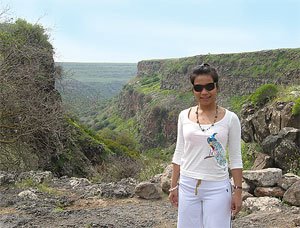Eat, Drink and Be Merry - We Almost Died. This can be a slogan of the Jewish festival Purim, which we celebrate on March 14 this year.
Really, its story and history is devoted to happy rescue of Jewish folk In Persia many centuries ago. Though it’s a merry holiday, it has a deep meaning as usually. We celebrate our deliverance from the threat of annihilation. Anyone who is familiar with Jewish history can see the Purim pattern repeated over and over again. Purim, therefore, is the prototype for Jewish survival during exile.
Twice in history, we were brutally exiled from our Land and we returned twice: once after the Babylonian Exile and once in contemporary times with the establishment of the State of Israel and the incredible ingathering of Jews from all over the world to our Land.
HISTORY OF PURIM
The history of events that served as a source of Purim is described in a special book, named Megillat Esther (Scroll of Esther). The quickie version is as follows:
The events commemorated by Purim took place in the ancient Persian Empire, in the fifth century BCE, under the reign of King Achashverosh.
Mordechai, one of the religious leaders of that generation, refused to prostrate himself before Haman, the vizier to the King. Haman immediately set out "to destroy all the Jews that were throughout the whole kingdom of Achashverosh". In order to effect his vicious racist plan, Haman decided to enlist the aid of the unsuspecting King Achashverosh.
Since Haman was a very superstitious person, he had lots cast to determine on which day he should carry out his design. The word for lots is "Purim", and from it we get the name for the holiday. The chosen date was the thirteenth of Adar.
The king, who trusted Haman, agreed to his plan to murder the Jews. For Haman had told him that the Jews were "scattered abroad in all the provinces," and that "their laws are different from those of every people". Letters, written by Haman and signed by the king, were sent out throughout all the provinces, commanding all persons "to destroy, to slay, and to cause to perish all the Jews.
The heroine of the Purim story is Esther, a devout Jewish woman who was forcibly taken as a wife for King Achashverosh. Queen Esther was able to intercede and save the Jewish community from genocide and annihilation.
Haman was hanged on the gallows which he himself had prepared for Mordechai and Mordechai became prime minister.


 This what is said about how to celebrate Purim:
This what is said about how to celebrate Purim: Really, its story and history is devoted to happy rescue of Jewish folk In Persia many centuries ago. Though it’s a merry holiday, it has a deep meaning as usually. We celebrate our deliverance from the threat of annihilation. Anyone who is familiar with Jewish history can see the Purim pattern repeated over and over again. Purim, therefore, is the prototype for Jewish survival during exile.
Really, its story and history is devoted to happy rescue of Jewish folk In Persia many centuries ago. Though it’s a merry holiday, it has a deep meaning as usually. We celebrate our deliverance from the threat of annihilation. Anyone who is familiar with Jewish history can see the Purim pattern repeated over and over again. Purim, therefore, is the prototype for Jewish survival during exile.














